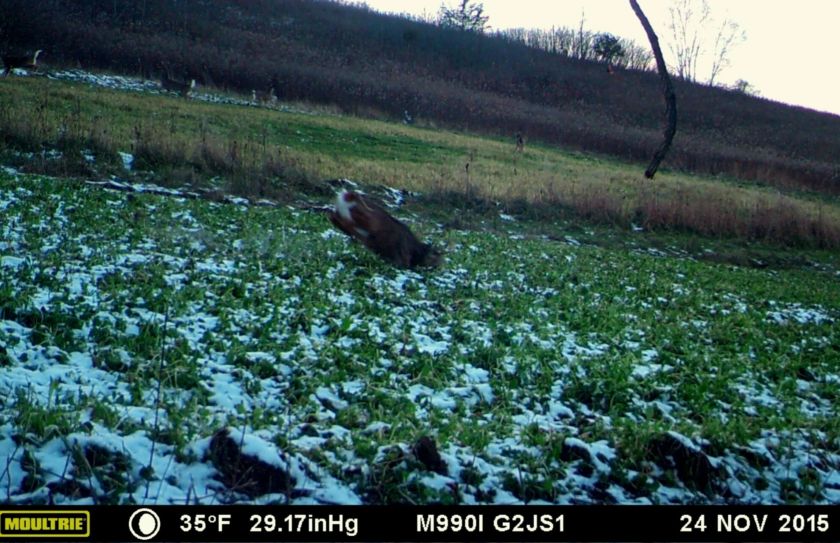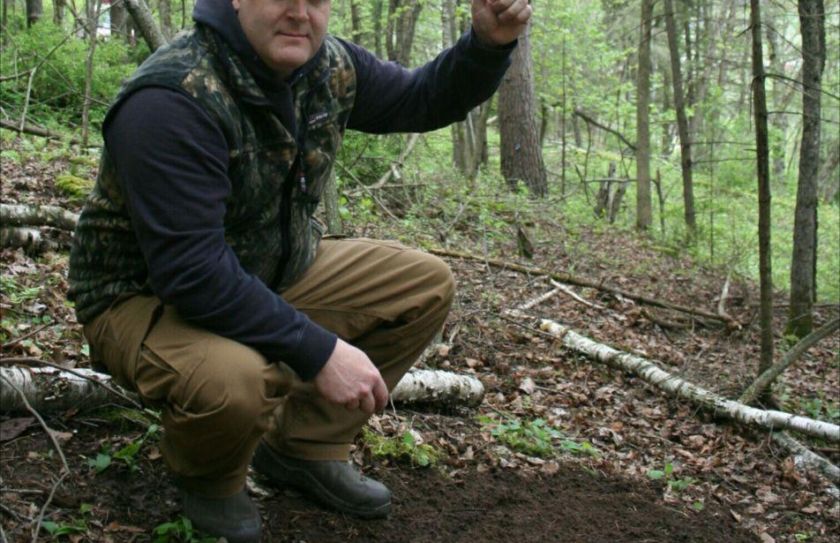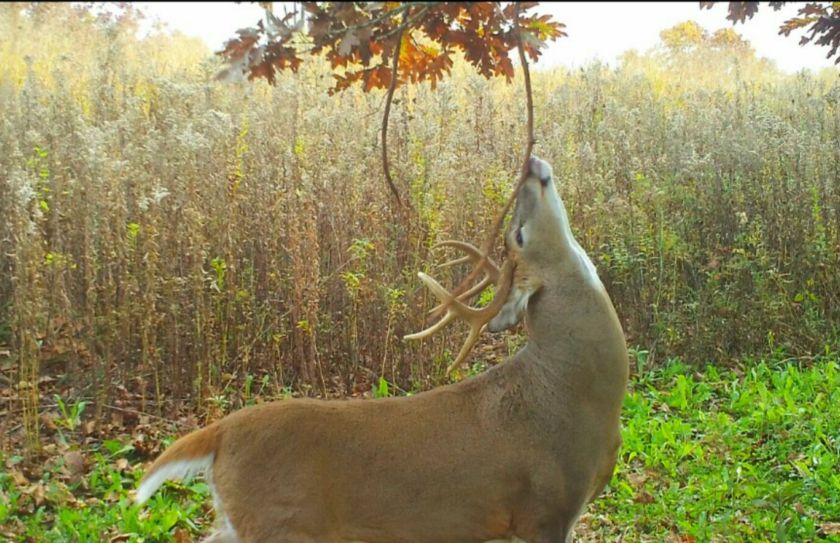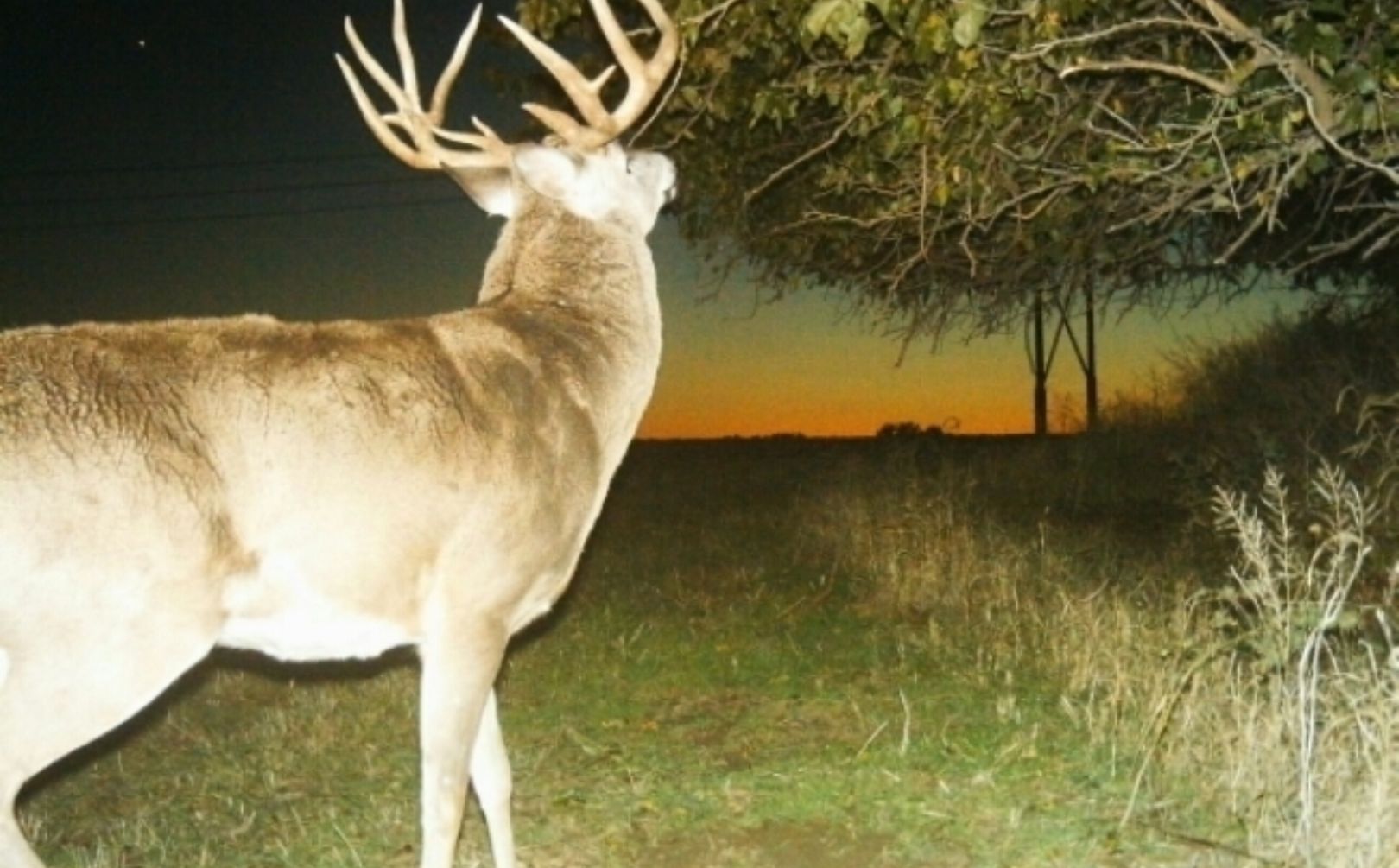
Do you have any mock scrape strategies? Zipline scrape trails, anchored licking branches and scrape hoops; have you tried any? There are so many very cool mock scrape strategies that can be used! Back in 2010 I first wrote about using mock scrapes for 3 important reasons in the article titled Buck Scrapes, "To Pee or Not To Pee". Well, although the title may have been a little goofy, the 3 main points were solid and I think that they are still solid today:
1. As a management tool
2. Establishing patterns of habitat use
3. Hunting Season Attraction
Would you believe the first line of the article was this, "Add 48 ounces of water in the afternoon, one hour drive home from work in early August and what time is it? Time to make a scrape!"? While this process may seem as goofy as the title of the article, it worked and it had worked often. Those methods had worked for several years at the time, and I was excited to eventually share them. It was always a pretty cool habitat activity to begin to apply those mock scrape strategies in late July or early August, and then to be able to expect to find immediate use by the local buck herd.
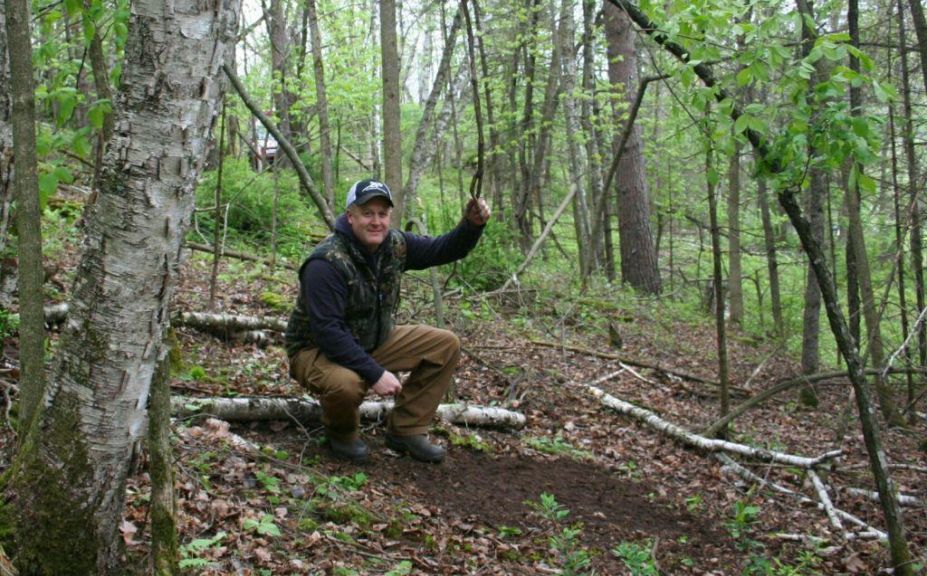
*How should you actually make a scrape? Check out the details in "How To Make A Mock Scrape".
Although the pictures are from lower quality game cameras from 10 years ago, the buck pictures in the article illustrate how bucks related to the mock scrape strategies by August 5th, 2005, only days after that particular scrape was created. Those were the "good old days" of mock scrapes; where with the exceptions of scent drippers, a small saw and a branch was about as creative as various mock scrape tips had become. Sure there were the tarsel gland tips and the use of many different types of commercially produced deer urines, but the art of creating mock scrapes had yet to be experienced fully. Wow, how things have changed!
There are two articles that I would like you to take a look at if you haven't done so already, and they involve both minerals and waterholes:
1. Advanced Mineral Strategies
2. Waterhole Stand Location Strategies
What do they have to do with mock scrape strategies? A whole lot! With waterholes and mineral stations, deer are encouraged and attracted to a specific, small location. Both eventually should become a vital part of the chain of habitat features that link together, and define, daily deer movements. Any mock scrape creation should offer the same potential for linking those same features as well. I mentioned in the mineral strategies article that a mineral site can be viewed as a type of "glue" that holds all of your habitat improvements. Well if minerals are the glue, mock scrapes can be at least considered the duct tape. Waterholes fall somewhere between the two, but the point is that when combined, they should be used to significantly reinforce deer movements. In the case of mature buck movements, mock scrapes are hard to beat. Coming soon, I will talk about how to create your next mock scrape, but the most critical steps in the process have to do with when,why, and where that you should consider creating a mock scrape in the first place.
When, Why and Where to Use Mock Scrape Strategies
Many bucks have fallen while a patient hunter was watching over a mature buck scrape. Hidden game cameras used to record scrape usage have revealed daytime use as well. But more important than a potential stand location, is that creating a mock scrape offers you the ability to strengthen mature buck movement patterns. I have to admit that personally, I rarely intend to hunt over a scrape. In fact, many of the hidden honey holes of scraping concentrations I am familiar with, are located more in staging areas, than actual buck cruising areas. A staging area is very hard to hunt, and is often in that last safe zone of secure habitat that eventually extends towards evening food sources, after deer have traveled from their remote bedding areas. Although buck sign can be abundant in a staging area, so can doe family group bedding; making the location very hard to hunt! But before we discuss where to try a heavy dose of mock scrape strategies, lets talk about when you should even create one.
1. When to create a mock scrape: Mid Summer Sweet Spot
During the months of Summer is also the perfect time to kill vegetation if needed, to make sure that your scrape platform is completely weed and debris free by the time it needs to be in use. A garden rake can also be a great way to open up your scrape, and with just a slight amount of deer usage a mock scrape will often remain clean for the entire season. I have most often used a stout stick that I carry away from the area, to leave in a location that deer will not smell my stinky hand print during the several days after the mock scrape is created. Although, during the middle of Summer your scent is really taken out of the equation because time, is on your side.
2. Why to create a mock scrape: Creating Buck Movement
Your mock scrape strategies need to have a purpose. Just like creating a mineral site or installing a waterhole, one of the best mock scrape tips that I can give to you is that you need to have a very defined, strategic purpose for creating a mock scrape. A mock scrape defines movement. It does not attract more deer to your land and for that matter neither do mineral sites or waterholes (except for in the most extreme of circumstances of severe drought). In 2010 I scouted and designed a parcel for a client in northern WI. He had placed 500 "T post" mock scrape creations, with cedar posts and manila rope hanging from the ends of each T to mimic licking branches. And yes, that is not a typo...500 were created, all on 200 acres. They had been there for over a year and guess what? Not one had been used. Even 500 mock scrapes couldn't attract bucks to land that didn't have mature bucks in the first place, in particular the style of mock scrape that was used within the heavily forested region the parcel was located. The #1 mock scrape tip is that mock scrapes should define mature buck movement. If you don't have any mature bucks that is another set of strategies that can be used all together, and I encourage you to read, Building A Quality Deer Herd. a Quality Deer Herd. Mock scrapes offer a great opportunity to define deer movement, but they also offer a great way to control the amount of time that a mature buck spends on your land.
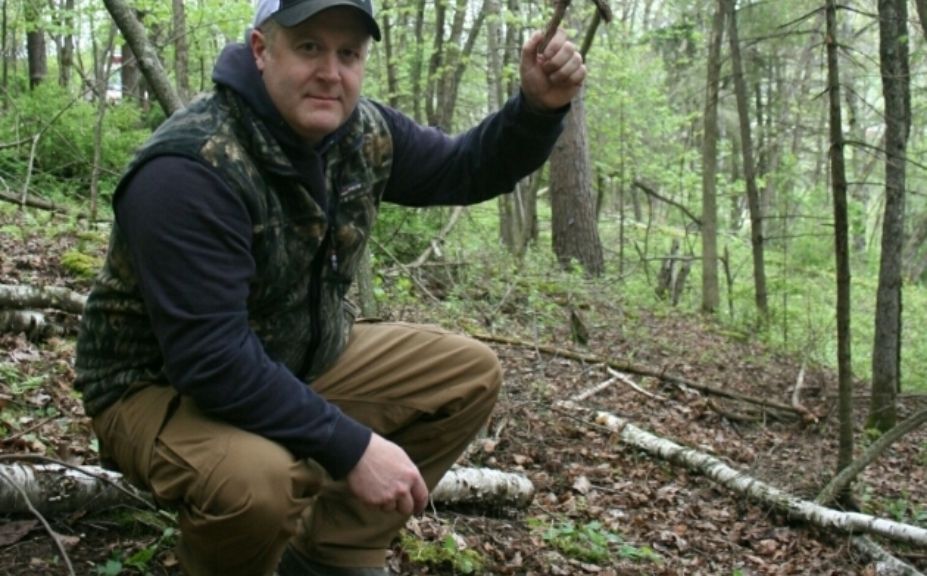
Those 500 scrapes were scattered pretty evenly across the entire northern WI parcel in large part, to attempt to attract and build a buck herd. However, I have also witnessed mock scrape lines over a 1/4 mile long. Talk about a lot of scrapes to work! In theory a buck could never leave a parcel because he would have to spend too much time freshening dozens and dozens of scrapes. However, no different than with waterholes or mineral stations, you really can create "too much of a good thing". The more mock scrapes, waterholes and mineral sites that you create, the lower the valueof each one. The more mock scrapes that you create, the less likely you are to actually define mature buck movement and instead run the risk of creating random mature buck movements. Random movements of any kind place you the hunter at great disadvantage each and every time that you enter the woods. Also, do you really want to slow a mature buck down, when he exits his remote and distant core bedding area? I don't, I want him to think about traveling to his evening food source while passing my stand location. It's tough enough to get a mature monster to cruise by a stand location prior to the end of shooting hours without slowing him down, until after he has passed my stand.
Using mock scrape strategies can be yet another way to enhance your stand locations; even if they aren't within shooting distance. One of my favorite scraping locations supports 3, complimentary stand locations. What are complimentary stand locations? They are the set-ups that I use mostly, and they are designed to take advantage of a high traffic mature buck area by offering a complete variety of wind directions, multiple hunter access routes, as well as the combination of evening, morning and all day sit opportunities. Nearly all of best mature buck hotspots contain at least 2 stand locations for at least 270 degrees of wind direction. Instead of lowering the value of 2-3 different mock scrape areas, I recommend that you maintain a high value of attraction through the implementation of 1 scrape location, that helps to support multiple stand locations. Also, there is a lot of support for showing that mature bucks have a tendency to avoid scrapes during the daylight hours. Maybe they don't in your area or maybe they do, but the area I want to make sure that they do not avoid is right below my stand location. I have watched quite a few 4 year old and older bucks avoid a nearby scraping area, with several ending up at the end of my broadhead just a short time later after skirting the scrapes. I believe that your mock scrape strategies should reinforce the movement, but they shouldn't actually be the only reason for movement itself, which brings us to exactly where you should be creating mock scrapes.
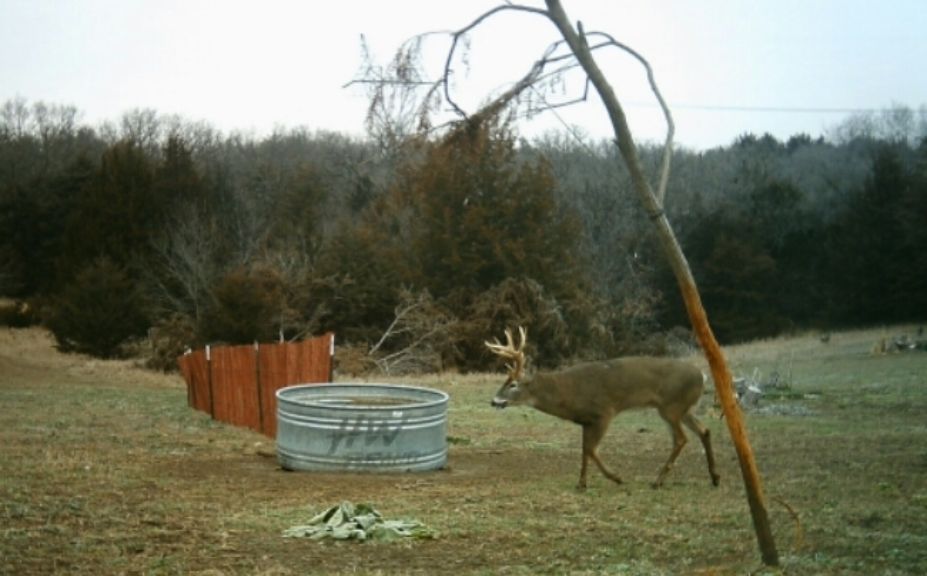
3. Where to create a mock scrape: Reinforcing Mature Buck Movement
There are several key locations that should be included within your own set of mock scrape strategies, and they are smilar to both waterhole and mineral locations, which is why I included both of those links in the beginning of this article. All 3 of those basic habitat improvements should be used as a type of glue, or connection to strengthen the bonds of all of your habitat efforts. Your Whitetail Habitat Plan should have a very defined and strategic purpose, and so should the improvements that link it all together. Where food sources meet timbered travel corridors is one great location. To compliment stand locations is certainly another, but any improvement that you make should follow the natural lay of the habitat and topography of the land.
I feel lucky to see an awful lot of deer parcels across the country each year, and during my trips do you know what makes me cringe the most? Unnatural improvements. Straight lines, travel corridors, bedding areas or food sources that are forced across the landscape and waterholes, mineral sites or mock scrapes that lack the ability to add to the strategic, intended movement of the deer herd. I visited a parcel several years ago in a remote wilderness location where an old logging trail traveled right through the middle of the land, from front to back. This logging trail was not only used as the main source of access for the entire deer camp, but it was also home to a series of mock scrapes. Literally as the hunters accessed the 400+ acres to hunt, they had to travel past several dozens scrapes meant to attract bucks to the land. Well, the fact that buck sign and game cam pics decreased drastically as the season progressed was the main reason I was asked to visit the land to create a hunting and habitat design in the first place, but those mock scrapes were definitely more a part of the problem, than the solution. The landowner was even skeptical of the scrapes, so it didn't come as a surprise to him when one of the first recommendations was to drastically relocate his mock scrape strategies. Not that he shouldn't have had any at all, just they should have been supporting various defined buck movements instead. Like many improvements that do not match the natural flow of the land, poorly located mock scrapes can cause much more harm, than good.
As long as you create mock scrapes sparingly and within a strategic purpose of intended mature buck movement you are on the right path! Hidden cruising benches, the exit and entrance of food sources or bedding areas, alongside lengthy food plot creations, or even in combination with waterholes and minerals, mock scrapes can enhance the movements of any mature buck travel. I also believe that while many may not be within shooting distance of a bowstand, they should relate to quality bowstands in some way, typically within 30-50 yards. That favorite area of mine that supports 3 stand locations, is between 30 and 60 yards from each stand location, but because of the lay of the land it is more likely for a mature buck to travel by at least 2 out of 3 of the stand locations, than it is for them to visit the scraping area during shooting hours. The scraping activity in that particular mature buck hotspot is part of the glue that holds the movement together instead of the movement itself, which is why there is barely a stand that can shoot to the scrapes.
4. A "Teaser" for Creating Mock Scrapes: Natural is Key!
I am dead serious, with a 1/2 gallon of water and an hour to wait, most of us can produce one of the key ingredients needed for a scrape. However, I can't wait to reveal to you how to create hoop scrapes and hanging ziplines of licking branches. The ideas are endless, especially if you consider two of the most natural and highly used scraping materials in the deer woods: A hanging vine or oak branch. Sure, you can use manila rope, but if you don't have to create 500 mock scrapes, why bother? You should be able to find plenty of natural ingredients to use considering the endless supplies of various vines and branches in the deer woods.
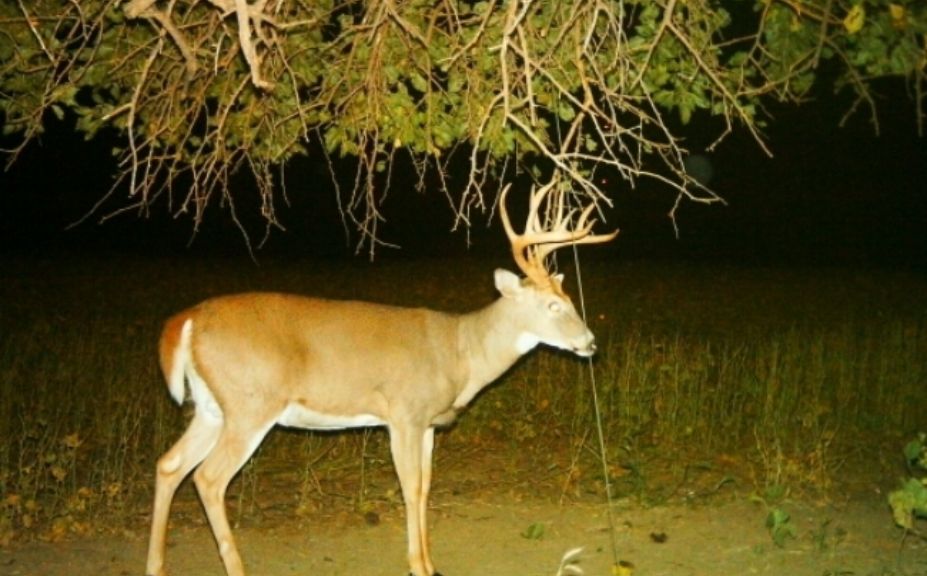
Conclusion
"What are your favorite and most used deer mineral strategies (replace with "mock scrape strategies")? I personally recommend that the combination of the entire package of potential should not be overlooked, including the ability to establish patterns of deer use early, that will be later utilized during the hunting season."
The above quote was from the first two lines of my Advanced Mineral Strategies article. But the exact same thing could be said for Mock Scrape Strategies. In fact, I could dig up the similar lines from some of my various waterhole articles, video clips, or even out of my books as it relates to kill plots, bedding areas, travel corridors and just about any other whitetail habitat improvement, including timber harvests. Designing deer parcels with a purpose is critical to your success, and that includes when you are using mock scrape strategies.
